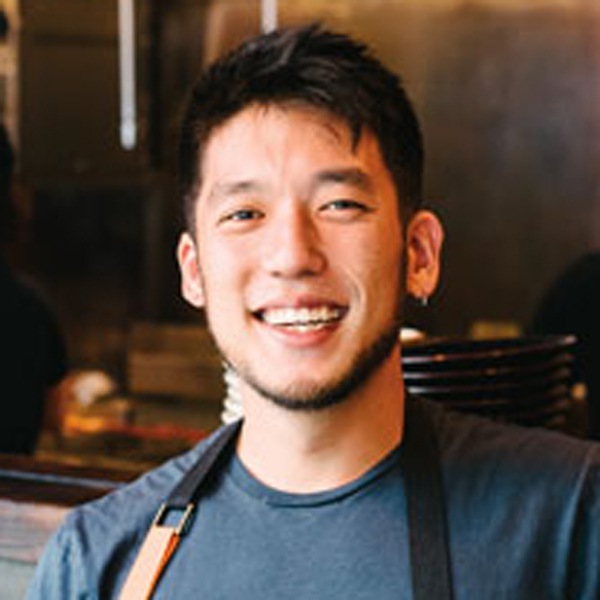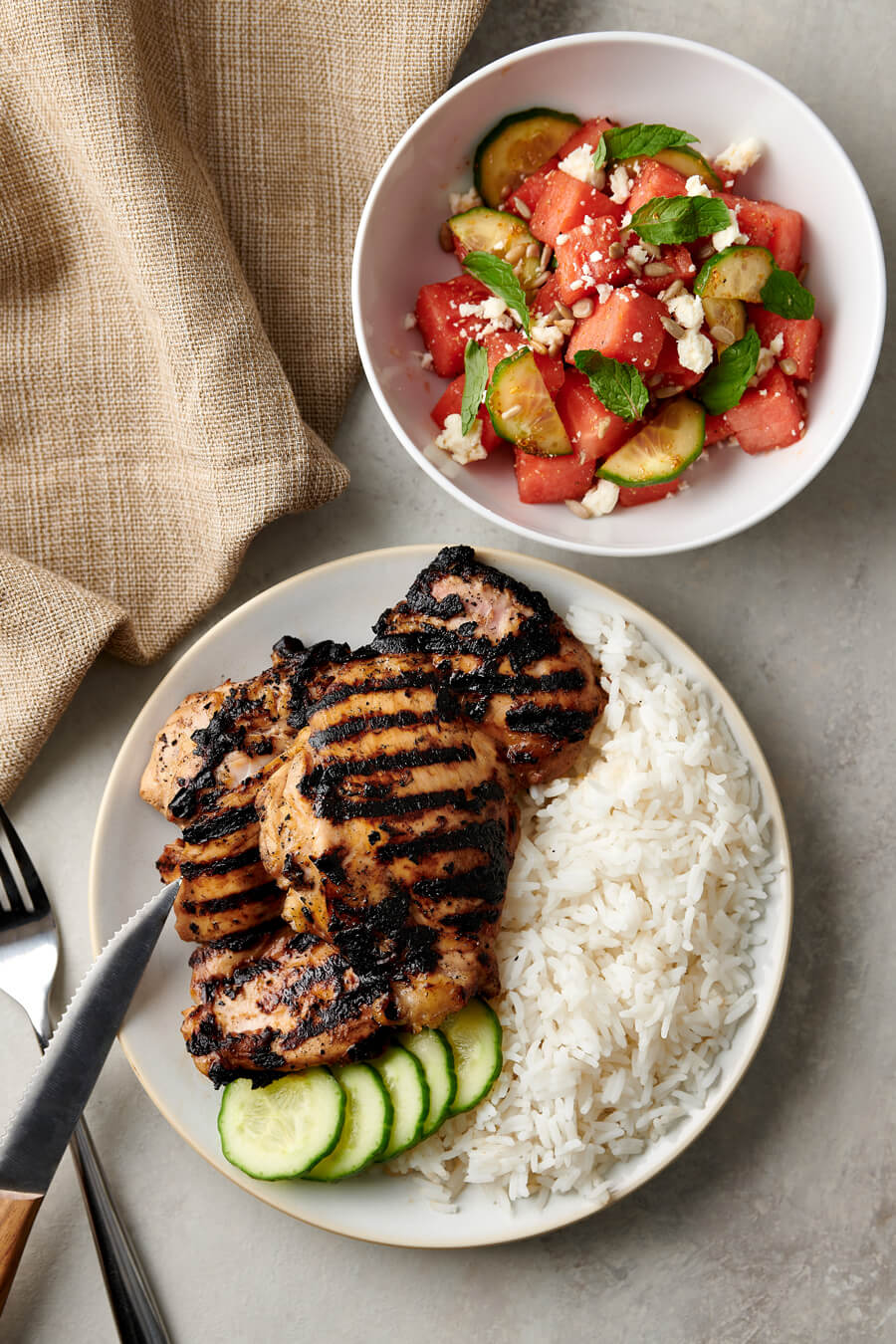
Born in Japan and raised in Seattle, Chef Shota Nakajima moved to Osaka, Japan, to learn about the art of Japanese cuisine when he was 18 years old. His time studying under Michelin-rated Chef Yasuhiko Sakamoto helped shape his perspective on cooking. Since returning to Seattle, it’s been his dream to share Chef Sakamoto’s approach to hospitality and Japanese cuisine in the United States. And he’s been making a name for himself in the process, competing on Iron Chef Gauntlet in 2017 and becoming a James Beard Award semi-finalist in 2018, 2019 and 2020. He also bested Bobby Flay in a tempura challenge on Beat Bobby Flay and is an Eater Young Guns recipient.
 Shota’s Teriyaki Chicken and Watermelon Salad Recipe
Shota’s Teriyaki Chicken and Watermelon Salad RecipeQ: What inspired you to want to pursue culinary arts?
I started working in restaurants when I was a teenager. At the time I just needed a job, but now I realize that I got into food because my mom and dad absolutely loved food. It was another language that I could speak with them and a way to connect with them.
Q: How has your Japanese heritage and American upbringing influenced your cooking?
I think if I had just trained in Japan, I wouldn’t have such a wide perspective on cooking. I’m constantly learning new techniques and new ways to use ingredients—including new ways to use ingredients that I’ve known for years in Japanese food but that other people use in different ways. So, I think that really impacts the way I cook. It’s Japanese but with a little Pacific twist to it.
Q: How do your cooking and your recipes honor your Asian heritage?
I would say my core is old-school Japanese. Even though I cook different things and use different spices from different countries, I always structure it the way Japanese people cook. Japanese cuisine is based on a 1-1-1 ratio, and what that means is one umami, one saltiness and one sweetness. Every recipe has a different balance. For example, tempura dipping sauce is five dashi, one mirin, one soy sauce. Udon is 12 dashi, one mirin, one soy sauce. That’s the base structure. When I cook, I still feature the ingredients in a very Japanese mindset, but I also incorporate all the other knowledge that I’ve gained along the way.
Q: Throughout your career you’ve had a chance to be mentored by renowned Asian chefs like Chef Yasuhiko Sakamoto and Chef Taichi Kitamura. Who are some other chefs or restauranteurs that inspire you?
Honestly, most of them are in Japan, but in Chicago, I met Stephanie Izard, and she’s been a great mentor to me. And still to this day I meet new chefs when I go on cooking shows, and they inspire me all the time.
Q: Across Instagram, YouTube and other social media channels, you boast nearly 200,000 followers. How did you begin creating content and building an audience online?
It was during Covid or near the end of Covid when I started. There’s a chef on TikTok and Instagram called A Cook Named Matt. I’ve known him for years, before he started doing content creation, and when the pandemic started, he really dove into it. When I went on Top Chef, he encouraged me to start creating content, too. He texted me almost every single day until finally I started doing it. But I’m grateful to him because he’s the one who really pushed me in that direction.
Q: What’s your favorite type of content to create?
Simple Japanese food and food hacks. I like sharing knowledge that it took me years to compile. Like, here’s a great way to store cilantro so it lasts two weeks. Things like that. Sharing the knowledge that I have and connecting with people has been a lot of fun.
Q: Do you have any kitchen or cooking hacks you can share with us?
When you fry things, make sure your fryer is set at a higher temperature when you pull the food out. Think about it like this: When butter is cold, it’s hard. But when it’s hot, it’s loose. It’s the same with oil. The hotter the oil gets, the looser it will be, and more oil will drip off the food so it’s not as greasy.
Q: What advice would you give to anyone looking to start a business or open a restaurant?
I always say shoot for the moon, you’ll end up in the stars. Surround yourself with the best people and hopefully your dreams will come true.
Q: What was the inspiration behind your Teriyaki Chicken and Watermelon salad recipes featured here?
I grew up in Seattle as a Japanese American and teriyaki chicken is a Seattle classic. There’s a guy named Toshi who opened Toshi’s Teriyaki years ago. I was good friends with his kids growing up, and we went to his spot all the time. So, that recipe is a little nod to Seattle and one of my favorite snacks. For the Watermelon Salad, I just wanted something light and refreshing that goes well with teriyaki chicken that would be great for parties and outdoor events.
Q: Are there any food trends you’re interested in?
I’ve been experimenting more with vegetarian and vegan food in general. I’m a sucker for tofu. I’m Japanese, so I grew up eating tofu. On its own it can be pretty bland, but you can marinate it and braise it to give it extra flavor—treating it like you would meat. One of my favorite flavors for tofu is a broth with mushroom, tomato, soy sauce, ginger, Szechuan sauce and peppercorns. Braise it and reduce it down so it has that umami punch.
Q: Having obtained much success at a young age, how do you see yourself continuing to grow?
Right now, I’m trying to pursue more TV and learn that side of it. But I feel that the key to success of any kind starts with taking care of my management team. Because they’re the ones who are there turning the wheels. My management style is to inspire as much as possible. Every conversation, even if there’s something going wrong, I try to think how I can leave this person inspired and energized.
